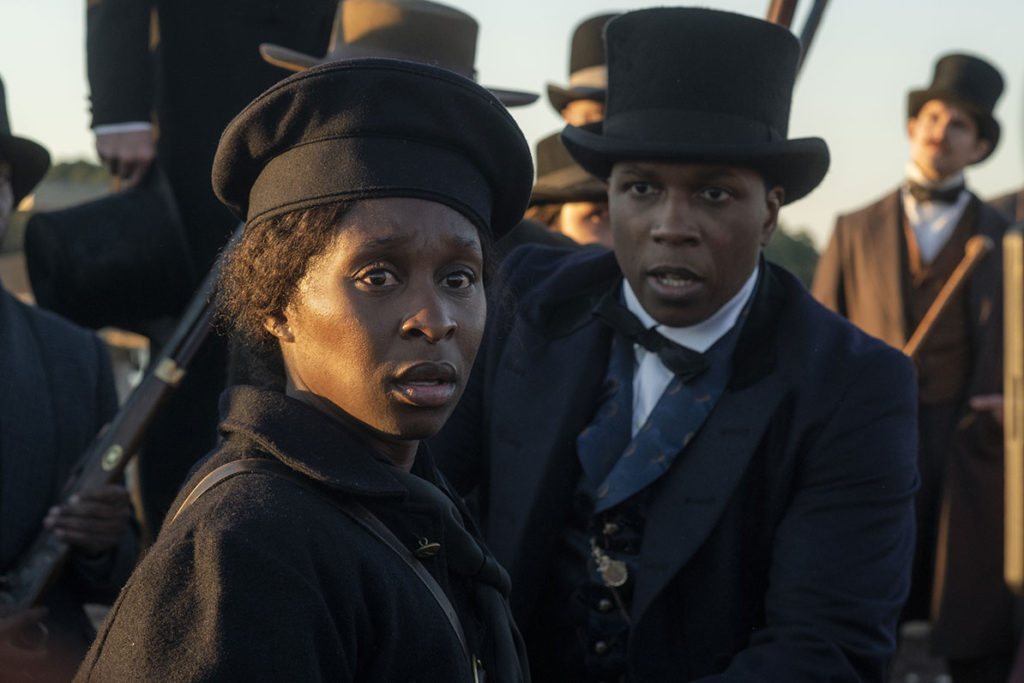
Cynthia Erivo in HARRIET. Photo courtesy of Focus Features.
I first watched the trailer for Harriet askance because the Harriet Tubman action figure I saw on-screen didn’t resemble the tiny, revered Tubman in the sepia photos. But that is because of my own skepticism of Hollywood history and my own woeful ignorance of the historic Tubman. The ancient lady in her photos and the historic Tubman are explained in this fine NYT piece Harriet Tubman Facts and Myths: How the Movie Tried to Get it Right. As Harriet’s director Kasi Lemmons says in this NYT article, “You don’t have an image of what she was like when she was actually doing this work in her late 20s, when she was this young superheroine, this completely badass woman.”
Harriet is good history. The problem is that Lemmons doesn’t trust us to appreciate Tubman’s heroism when we see it – a 100-mile solo escape from slavery, guiding 75 escaped slaves to freedom with the Underground Railroad, leading troops into battle to free 700 more in the Civil War, and becoming a thought leader in the abolitionist and suffragist movements. So we have this swelling music every time Tubman does something inspirational. The constant, obvious beatification is distracting.
Tubman is played with convincing intensity by Cynthia Erivo. Erivo was absolutely the best thing about the Steve McQueen film Widows; since Erivo’s character teamed with those played by Viola Davis, Michelle Rodriguez and Elizabeth Debicki, the fact that she stole the movie is impressive. Erivo is a Broadway musical actress/singer, and Harriet uses her singing talent as well.
If you’re not expecting great cinema, you’ll appreciate this important and compelling history. Harriet makes it clear why Tubman belongs on the twenty dollar bill.
